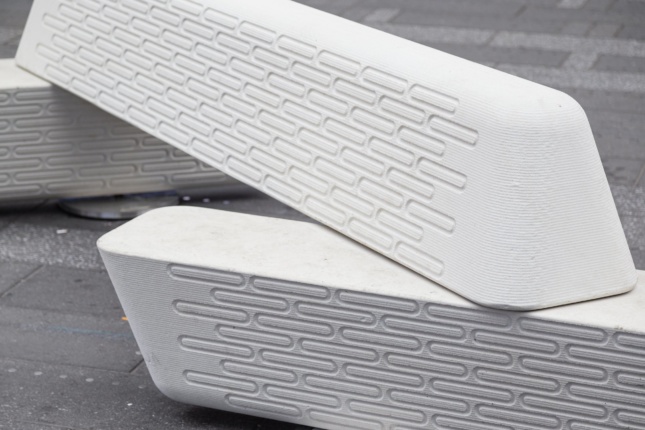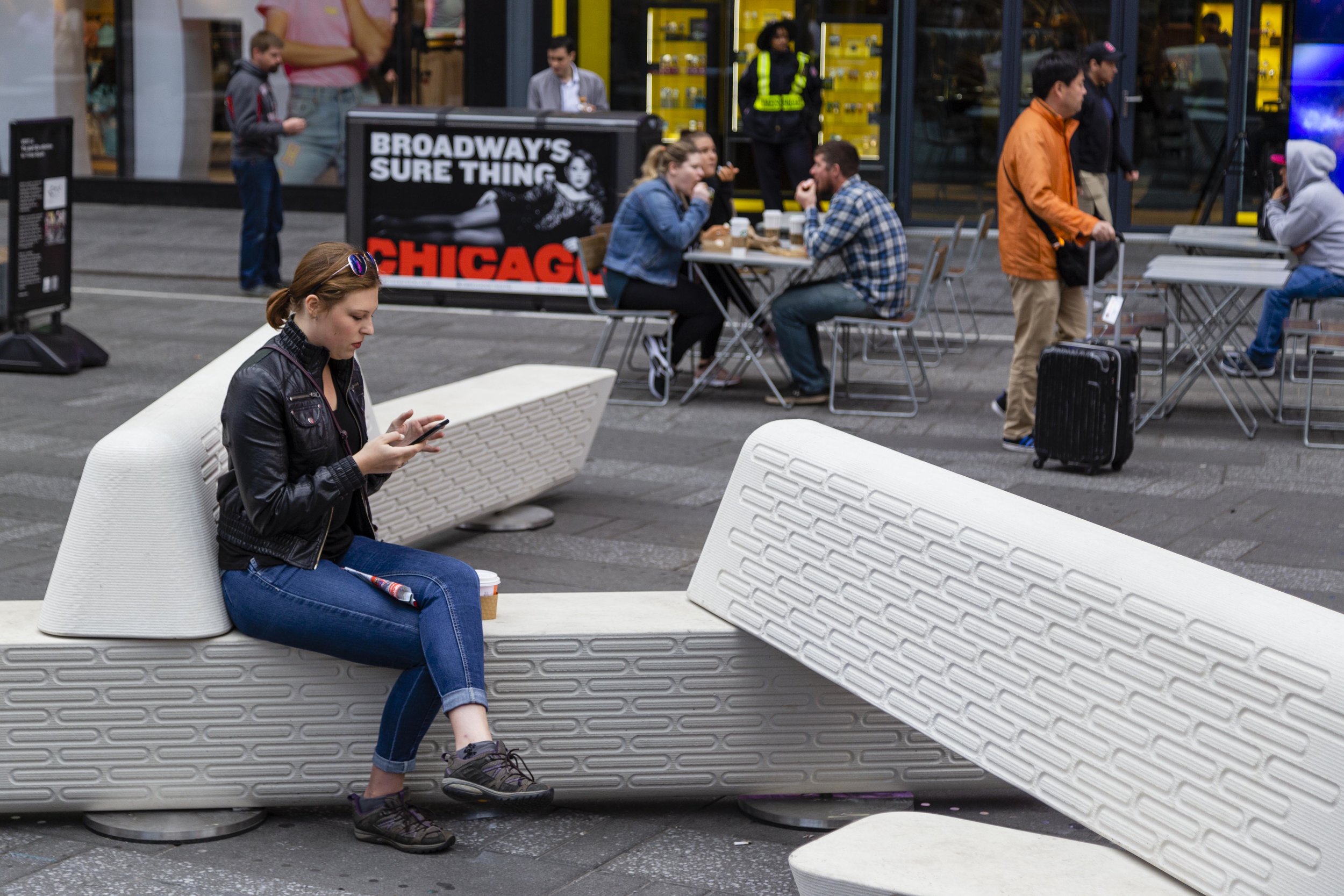This May, designer Jou Doucet x Partners, working with the Times Square Design Lab (TSqDL), debuted a 3D-printed concrete alternative to the now-common heavy concrete planters, bollards, and more traditional “Jersey” barriers that surround public places and prominent buildings across the country. Anti-terror street furniture is the often ugly urban peripheral that plugs into our cities to add a new feature—specifically the capability to stop speeding vehicles and other terrorists attacks. Doucet’s design offers what he calls “a different, humanist approach to security.”
The project was commissioned for the second annual TSqDL initiative, which was created to bring new design ideas to the public realm—specifically, New York’s crossroads of the world that is visited by nearly half-a-million people daily. On display and in use since May, the Rely Bench comprises gently rounded, interconnected concrete platforms that each weigh over one ton. With its modular components connected with steel rods, the benches are designed to almost act like a net, catching a vehicle and absorbing its impact. The design is nice enough, but the real innovation is in the method used to make it.

The Rely Bench is the first product to be manufactured through HyCoEx, a fully digital production method that street furniture company Urbastyle believes will “revolutionize the concrete furniture market”. Little information has been made available about the technology other than it uses an extrusion technique powered by a 3D printing robotic arm developed by Concrenetics and produced by UrbaStyle in partnership with Autodesk, ABB and Cementir Group. Though extrusion is common with plastics, HyCoEx is the first method to adopt it for concrete; other methods primarily use deposition, layering concrete to build the final form.
The benefits of 3D printing over traditional concrete casting include lowering production costs resulting from reduced waste material and the lack of required mold. Indeed, Urbastyle believes that the HyCoEx method “may one day completely replace mold production.” Perhaps most significantly, HyCoEx empowers designers to efficiently create any form or surface pattern they can imagine. The company sees it as a type of “artisan” technology that removes the separation between design and fabrication.
The Times Square installation was just a prototype of the design and technology, but prepare to see more of both soon. The Rely is currently being tested against international crash barrier standards.
